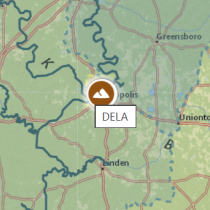NEON CEO Testifies to House Committee on Appropriations on Large Facility Funding, Funding for NSF
March 14, 2011
On Friday, Dave Schimel presented testimony on the Obama Administration’s Fiscal Year 2012 request to Congress for NSF’s MREFC (Major Research Equipment and Facilities Construction) account. The oral testimony was conducted before the House Appropriations Committee Subcommittee on Commerce, Justice, Science and Related Agencies. The Subcommittee’s jurisdiction includes funding for NSF, NASA, and NOAA, among other agencies. Dr. Schimel highlighted the need for NEON and other large-scale observatories to provide environmental information that is critical in helping us manage our natural resources in a sustainable manner. This need is reflected in the growing marketplace for credible environmental information derived from standardized observations. In contributing data and resources that can be used for environmental decision making, NEON is well-positioned to contribute to a national investment strategy that will help fuel the nation’s long-term competitiveness and innovation agenda. In response to Dr. Schimel’s testimony, both the Chair and ranking member of the subcommittee strongly encouraged scientists to become more active in writing and visiting their representatives and to make strong efforts to explain the importance and impact of their work. The subcommittee also noted that the growth of entitlements has greatly limited the discretionary budget available to invest in the nation's future and that a serious national debate was required. It was clear that there was strong bipartisan support in the subcommittee, but Congress faces great budget challenges.
Below are excerpts from Dr. Schimel’s testimony:
“We applaud NSF for taking proactive steps towards a vision where the creative capacities of private industry, academia, and government have unfettered access to data and information generated through targeted investments at the frontiers of science. That vision also recognizes the growing marketplace for access to environmental information to aid those with resource management responsibilities at the local, state, regional and national levels. NEON belongs to a class of NSF environmental observatories that contributes to that vision. NEON is an advanced research infrastructure for the study and analysis of the biosphere at regional to continental scales. Living systems are experiencing some of the greatest rates of change caused by multiple changes in the environment, both human‐driven and natural. These changes affect ecosystems, air quality, water resources, agriculture, and other goods and services. Understanding how these changes impact our natural resources requires a fully integrated, multi‐scale system to detect, understand, and forecast changes.” “Such initiatives build the capacity to empower individuals and enterprises with the tools, data, and information that maintain the health of the environmental sciences broadly described and support informed environmental decision making. Both objectives are vital contributions to our economic growth and environmental health.”
